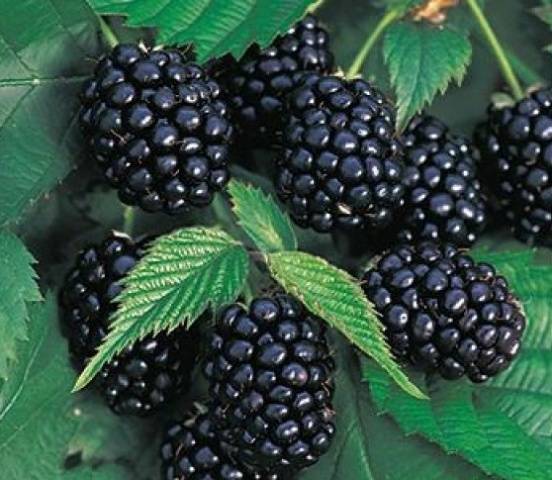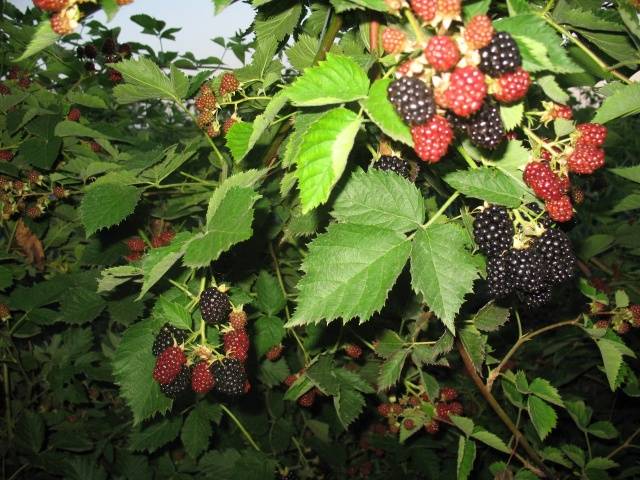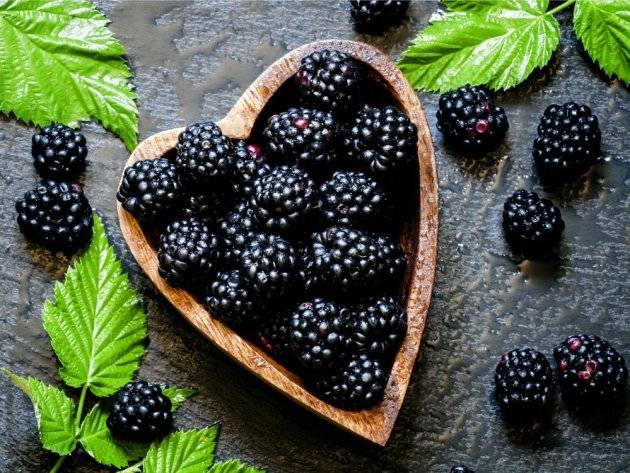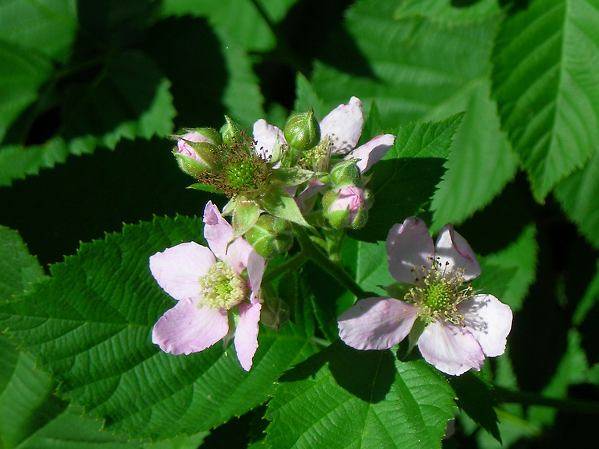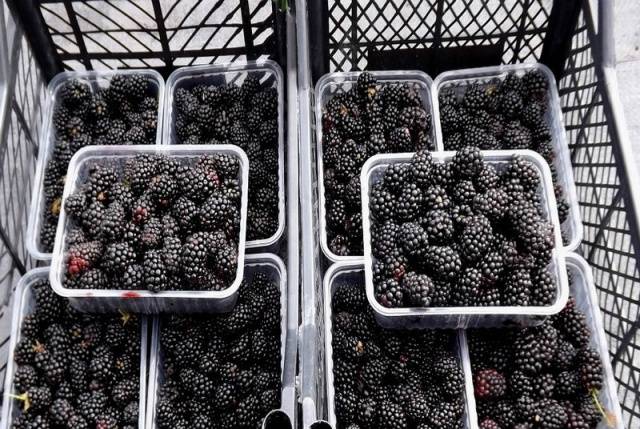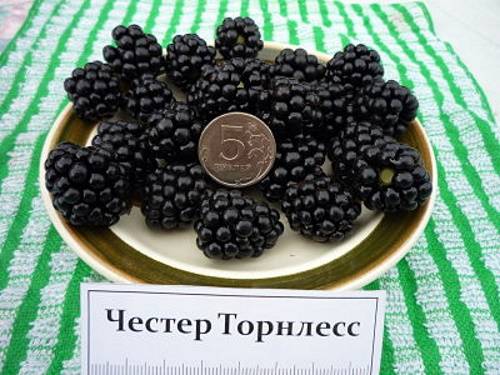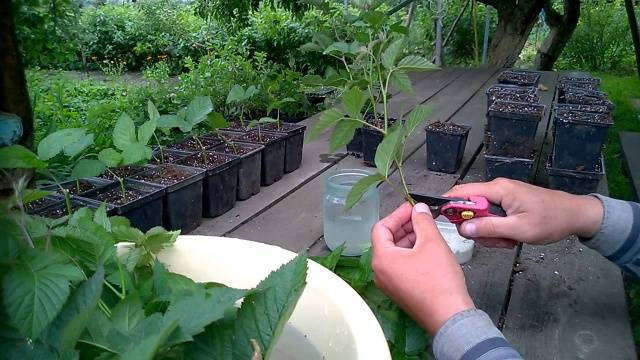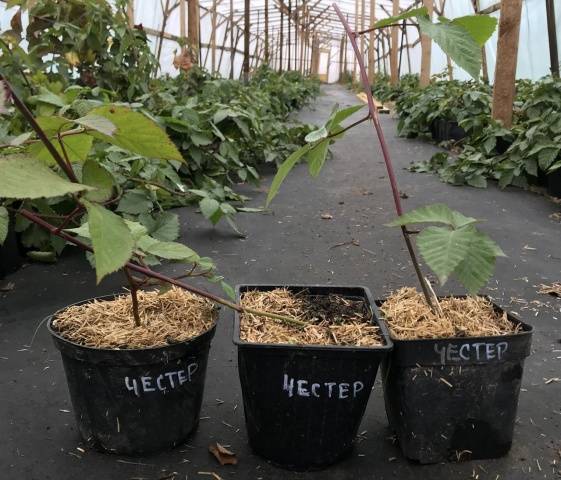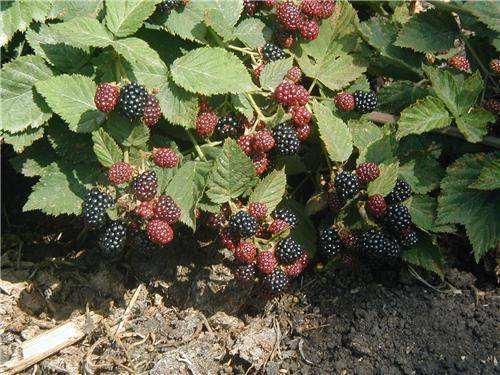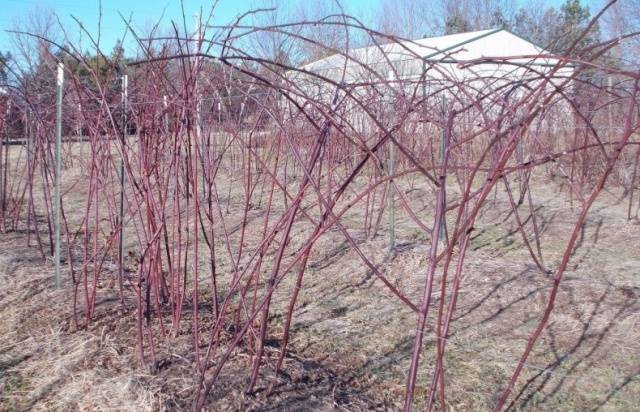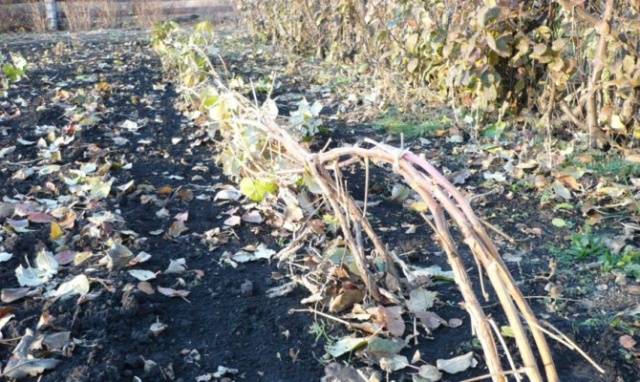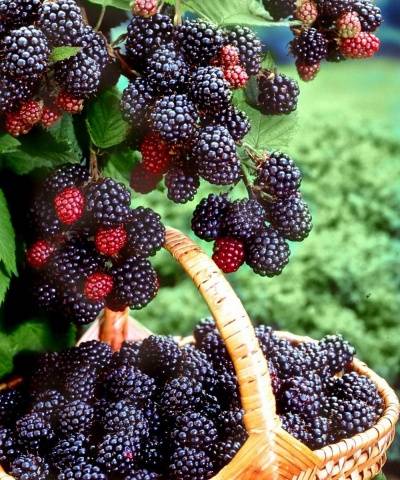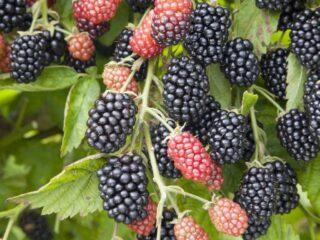Content
The world leader in blackberry production is the United States. It is there that you can find a large selection of fresh berries and processed products on store shelves. Our blackberries are the easiest to buy on the market. And even then the choice is unlikely to be great. But farmers are finally paying attention to this crop. The question is which variety to plant. For fresh berries that will be well stored and transported, you should pay attention to the bushy blackberry Chester Thornless.
Breeding history
Chester Thornless, a hybrid blackberry bramble, was bred in 1985 at the Beltsville Research Center, Maryland. The parent crops were the upright (kumanika) Darrow variety and the semi-creeping Thornfree variety.
Description of berry culture
The Black Sateen blackberry also descended from the Darrow and Thornfree varieties, but it bears little resemblance to Chester Thornless.
General understanding of the variety
Blackberry cultivar Chester Thornless produces semi-creeping shoots. Their maximum length is 3 m. Although the lashes are strong and thick, they bend well, which greatly facilitates maintenance. They begin to branch low, and the lateral branches, with good agricultural technology, can reach 2 m.
The blackberry Chester Thornless has a high shoot-forming ability and not too long powerful whips. If desired, they can not be tied to trellis, and part in different directions. So from a bush, you can form a sprawling massive plant. True, it will be difficult to collect a bountiful harvest. But due to the lack of thorns and the flexibility of the shoots, it is quite possible.
Fruit clusters also form low from the ground, which explains the high yield of the blackberry variety Chester Thornless. The dark green leaves are trifoliate. The root system is branched and powerful.
Berries
The cultivar forms large pink flowers, mostly with five petals. Blackberries Chester Thornless cannot be called giant, their weight ranges from 5-8 g. But the variety belongs to large-fruited.
Fruit branches of the Chester Thornless cultivar are erect. It is noteworthy that fewer berries are formed at the ends of the shoots. The largest number of fruits is collected at the base of the bush. The shoots of the last year are yielding.
Fruits are almost perfect oval, bluish-black, beautiful, mostly one-dimensional. The taste of Chester Thornless blackberries is good, sweet, with a noticeable, but not strong sourness. Fruit aroma is average.
The taste of berries was highly appreciated by domestic ratings. Reviews of gardeners about Chester Thornless's blackberry are mostly positive. Stingy on evaluations, Russian and Ukrainian tasters rated the variety on a solid four independently of each other.
But the main advantage of the Chester Thornless blackberry is the high density of the fruit. They are well transported and retain their commercial qualities for a long time. Together with good taste, this has made the cultivation of Chester Thornless blackberries profitable for large and small farms.
Characteristic
In all respects, the Chester Thornless blackberry variety is excellent for growing as an industrial crop.
Main advantages
Chester Thornless is superior to other blackberries in frost resistance. It is able to withstand temperatures up to -30⁰ C. Drought resistance is also at the level. Just do not forget that the culture of blackberries is hygrophilous in general.
Berries of the Chester Thornless variety are dense, tolerate transportation well and look great on the counter:
- they are beautiful;
- fruits do not flow, do not crumple, keep their shape well during storage;
- large enough to attract attention, but not so huge as to give the impression that there are only a few berries in the basket or plastic box.
Growing Chester Thornless blackberries is less of a concern than other varieties. This is due to the fact that it is desirable to shorten and tie up the shoots, but not necessarily.
Chester Thornless has the same soil composition requirements as other varieties. Shoots are devoid of thorns along their entire length.
Flowering period and ripening time
Flowering in the Middle Lane occurs in June. The berries ripen by the beginning of August, which is considered the mid-late fruiting period. In almost all regions, they manage to ripen before frost. This is due to the fact that the harvest time for Chester Thornless blackberries is less stretched than that of other varieties, begins in early August and lasts about a month.
Yield indicators, fruiting dates
Chester Thornless is a fast-growing variety. It gives a full harvest in the third year after planting.
The average yield of the Chester Thornless blackberry variety is 10-15, and with good agricultural technology - up to 20 kg of berries from a bush. Industrial plantations yield up to 30 t / ha.
Fruiting in the south begins at the end of July, in other regions - in August and lasts 3-4 weeks.
Scope of berries
Chester Thornless blackberries are consumed fresh and sent for processing. Their taste and aroma are better than that of most industrial varieties.
Disease and pest resistance
Chester Thornless blackberries are resistant to pests, diseases and other negative factors. This does not override preventive treatments.
Advantages and disadvantages
If we consider the characteristics of the Chester Thornless blackberry as an industrial crop, they may seem ideal:
- Good berry taste.
- High transportability and keeping quality of fruits.
- The processed products are delicious.
- High productivity.
- Good shoot-forming ability.
- The whips are easy to bend, which makes it easier to lift onto the support, prepare for winter.
- Shoots are devoid of thorns along their entire length.
- High resistance to heat and drought.
- The cultivar does not have to shorten the lateral branching.
- High resistance to diseases and pests.
- Short fruiting - 3-4 weeks.
- Chester Thornless is one of the hardiest varieties.
But this blackberry is still not perfect:
- The berry tastes good, but not great.
- The fruits in the cluster may not be one-dimensional.
- Due to its low branching, Chester Thornless is difficult to cover for the winter. And it is not recommended to cut off the side shoots located near the ground - it is there that most of the crop is formed.
- The variety still needs to be covered.
Reproduction methods
In the Chester Thornless blackberry, the shoots first grow upward and then droop. The cultivar is easy to propagate by rooting or pulping.
The variety reproduces well with green or root cuttings, dividing the bush.
Landing rules
The Chester Thornless variety is planted in the same way as other blackberries.
Recommended timing
In the northern regions and the Middle Lane, it is recommended to plant blackberries in the spring, when the soil warms up. Then the plant will have time to take root well and get stronger before the onset of frost. In the south, all varieties, including Chester Thornless, are planted in early fall when the heat subsides.
Choosing the right place
The Chester Thornless blackberry variety will grow and bear fruit in partial shade. But such a landing is permissible only in the south. In other regions, with a lack of sunlight, the harvest will be poor, the berries are small and sour. Some of them will not have time to ripen before frost.
The soil needs slightly acidic, loose, fertile. Light loams are best suited. Calcareous (sandy) soils are not suitable.
Groundwater should not come closer than a meter to the ground surface.
Soil preparation
Pits for planting blackberries are dug in 2 weeks. Their standard size is 50x50x50 cm. The top fertile soil layer is mixed with a bucket of humus, 120-150 g of superphosphate and 50 g of potash fertilizers. The soil is improved by:
- too sour - lime;
- neutral or alkaline - red (high-moor) peat;
- dense - with sand;
- carbonate - with additional doses of organic matter.
The planting hole is 2/3 covered with fertile soil and filled with water.
Selection and preparation of seedlings
In nurseries and organizations selling planting material, Chester Thornless blackberries are not so rare, it is not difficult to find a variety. But it is better to buy young plants from reliable partners.
First of all, you should pay attention to the roots - they should be well developed, without damage, smell like earth, and not mold or a cesspool.
Smooth, even bark without cracks or folds is a sign of the health of a blackberry.
Algorithm and scheme of landing
On industrial plantations, the distance between Chester Thornless blackberry seedlings is made 1.2-1.5 m, in private gardens - from 2.5 to 3 m, row spacing - at least 3 m.If you want to grow the variety as a free-standing powerful bush, under they leave a large area. But it will be more decorative than a fruiting plant - it is inconvenient to harvest the crop inside.
Landing is carried out in the following sequence:
- In the center of the pit, a mound is poured, around which the blackberry roots are straightened.
- They fall asleep, constantly compacting the soil. The root collar should be located 1.5-2.0 cm below the surface.
- The seedling is watered with a bucket of water.
- The soil is mulched.
Follow-up care of the culture
Planting is completed, and caring for Chester Thornless's blackberries begins with abundant watering of the bush. The soil should not dry out completely until the plant takes root.
Growing principles
Blackberries Chester Thornless are remarkable in that they do not have to be tied up, growing in the form of a large bush. This is due to the natural length of the main shoots - up to 3 m. But such a blackberry will become a decoration of the garden. It will be difficult to collect berries hidden inside the bush.
So it is better to tie the Chester Thornless blackberry to a multi-row or T-shaped support up to 2 m high.For convenience, fruiting shoots are fixed on one side, young lashes on the other.
Necessary activities
Although the variety is drought-resistant, in the south, in hot weather, blackberries are watered once a week. In regions with cool summers - as needed - the soil under the plant should not dry out, the culture is hygrophilous. To reduce watering, the soil is mulched.
Loosening is best done at the beginning and end of the season. The rest of the time it will be replaced by mulching: on acidic soils - with humus, on alkaline soils - with high-moor peat.
The Chester Thornless variety produces a large crop, despite its relatively short shoots. It needs to be fed intensively. If the soil was well seasoned before planting, fertilize the blackberries after a year.
In the spring, nitrogen is introduced, at the beginning of flowering - a mineral complex without chlorine. During the ripening period of the berries, blackberries are given a solution of mullein infusion (1:10) or green fertilizers (1: 4). Foliar dressing with the addition of a chelate complex will be beneficial. In the fall, blackberries are fed with potassium monophosphate.
Shrub pruning
After fruiting, old branches are cut at ground level. Only broken lateral shoots and the weakest lashes are removed from the annual growth in the fall - despite the high winter hardiness, some of them can be damaged by frost.
In the spring, the branches are rationed. Some gardeners leave 3 shoots. This makes sense if the blackberry is poorly looked after, for example, in a rarely visited dacha. With intensive cultivation, 5-6 lashes are left.
Side shoots do not need to be pinched at all. But this will complicate care, and the need for feeding will increase. Whether to shorten the side lashes as soon as they reach 40 cm, each gardener decides independently.
Preparing for winter
After fruiting, which in the northern regions barely has time to end before the onset of frost, and pruning of old shoots, young lashes are removed from the support, tied and covered for the winter. To do this, use spruce branches, straw, agor fiber or spandbond, dry earth. Better yet, build special tunnels.
Although the Chester Thornless blackberry shoots bend well, lateral branching begins quite close to the base of the bush. This complicates the shelter procedure, but it is at the bottom that most of the fruit clusters are formed.
Diseases and pests: methods of control and prevention
Blackberry Chester Thornless is resistant to diseases, pests are rarely affected. But at the beginning and end of the season, it is imperative to carry out preventive spraying with preparations containing copper. Need sanitary and brightening pruning.
You can not plant crops that can infect blackberries with their diseases closer than 50 meters. These include raspberries, nightshades, strawberries. If this is not feasible, at least place them as far away as possible.
Conclusion
Blackberry Chester Thornless is one of the best commercial varieties producing fresh, high quality berries. It will perfectly fit into a small backyard farm due to its yield, unpretentiousness and thornless shoots.
